| Issue #147 • May/June, 2014 |
I’ve always found the use of seasonal rains by native peoples very fascinating. From the diversion of floodwaters in earthen berms to irrigation via “aquaduct,” it seemed incredible that people were able to irrigate their crops in the deserts without the use of electricity. Here in southern Arizona, the indigenous peoples used flood waters directed by earthworks to irrigate their seasonal crops, immensely contributing to their production of food beyond the other farming methods that included limited springs and a very few seasonal and year-round streams.
When we first built our house in the rural high desert of southern Arizona, I knew gardening would be a challenge. Not only is water scarce down here, but the prospects of drilling a well in certain areas are grim. Due to the “layered” nature of the subsurface rock in our area, well drilling can be spotty at best. This is not a great thing when you desire to grow some of your own food. And while our small garden did produce food, we didn’t have the water abundance to grow a large patch of corn like I had wanted.
So, last summer, my project was to experiment with growing food in a seasonal sense with just our summer monsoon rains. In my search for a good crop, I was given a handful of heirloom corn kernels from my wife’s family, who had homesteaded this area since the 1890s. They used to grow this variety of corn every year during the summer monsoon rains, with zero additional irrigation.
Keep in mind, this is southern Arizona; we average about 12 inches of rain per year, of which 4-5 inches come in July and August. If we can do it here, then most BHM readers should be able to accomplish this with a variety of other crops in most any area of the country.

A lush garden in the desert is possible using nothing but rainwater.
Finding a suitable area
The first step was to evaluate a suitable location where water could be collected in abundance and held for future use. Locations with roof runoff or hardpack such as a driveway or road surface seem to offer the best options. The best location I found was just off of our dirt driveway where I had observed a large amount of water shedding during previous rains. There was a natural bend in the road and the water ran off in several areas. I figured an earthen berm placed across the driveway would concentrate the water into the location that I wanted it to go. It was now time to get out the shovel and develop some sweat equity in this project!

Collection and storage
The plan was to use a large berm to divert the water from the road into a large catchment basin and then into a small retention pond lined with a cheap plastic painters’ sheet for future irrigation needs. Once the water diversion berm was completed, I shaped a small diversion ditch to direct the runoff into the catch basin area. This area consisted of a rounded berm about 15 inches higher than the bottom of the catchment area. The catchment basin was approximately 9 feet across in the shape of a half circle. Keep in mind, this area could be made much larger depending on your rainfall and runoff area.
Directing water into the catchment pond was done in two ways. The first was done by way of a piece of 4-inch PVC drain pipe placed with the “lip” or edge of the pipe at about 2-3 inches of depth from the bottom of the catchment basin (the pipe should be long enough to reach across the berm to your gardening area). That way, after the basin was filled to that level, all excess water was diverted to the pond to be used for irrigation between rains. Additionally, a level spillway at the edge of the catchment berm should be included in case the pipe becomes clogged or unable to handle the volume of water coming into the basin. Note: I had 4-inch pipe lying around so that is why I chose to use it. If you don’t have that size pipe, a compacted spillway at the edge of the berm would be perfectly fine as well.

Managing the growing area
Once the first monsoon rains fell, I planted the catchment basin with the corn. Germination was quick; the plants were a couple inches tall in just a week. The only real management of the process was to pull back some of sandy deposits that were washed off of the road so they didn’t overcome the brand-new corn plants. To manage the silt collection, I just kept it shoveled in the areas closest to the corn. With every rain, the bulk of the deposited silt would encroach by about two or three feet. Not too much of a problem, but if left untended it could damage the plants.
Watering was simple I just waited for the rain to do its job. If it was going to be more than a few days without rain, we’d just irrigate the basin with the water in the catchment pond located a couple feet away. A few scoops with a 5-gallon bucket every couple of days kept the corn green and growing well.

Collect your free harvest
After about 60 days of growing, we harvested mature corn that had required only a small amount of labor and a small piece of a $9 painters’ tarp to line the catchment pond. Other than that, the water was free and gravity took care of the storage and irrigation. In all, we got about 40 small to medium ears of corn. While not large by Iowa standards, they tasted great and were about the closest thing to free food in the desert that we could find!
Give it a try
Depending on your area, this could be accomplished much easier and on a much larger scale than our project was. If your soil is heavy clay you may not need a liner for your catchment pond. And with a proper spillway, you wouldn’t even need the PVC pipe, making this a project of sweat equity only. Furthermore, our project was done with corn, due to the free seed and this heirloom seeds’ fast growing nature, but it could easily lend itself to many other crops such as squash, melons, determinate tomatoes, etc.


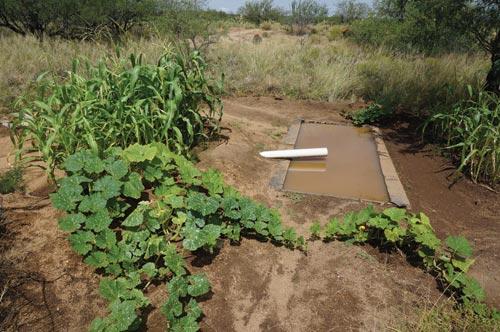






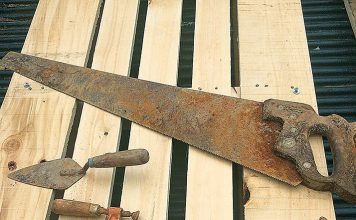
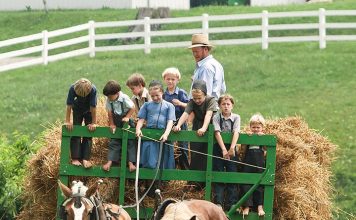
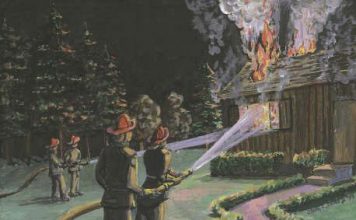
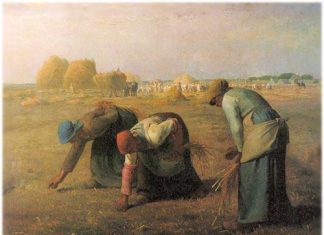
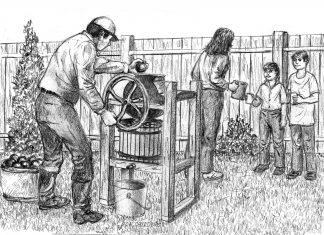
Some years ago, I read an article about a farmer in Mexico who had been using modern agriculture methods to farm and his soil had become depleted. He thought about what to do and decided to plant his corn, beans, and squash in the native way in small mounds. He said it worked great; his soil and crop output improved a lot. Also, of course, far less water was required. The ancient peoples had it right!
love your article…Very informative..Thanks for sharing!!